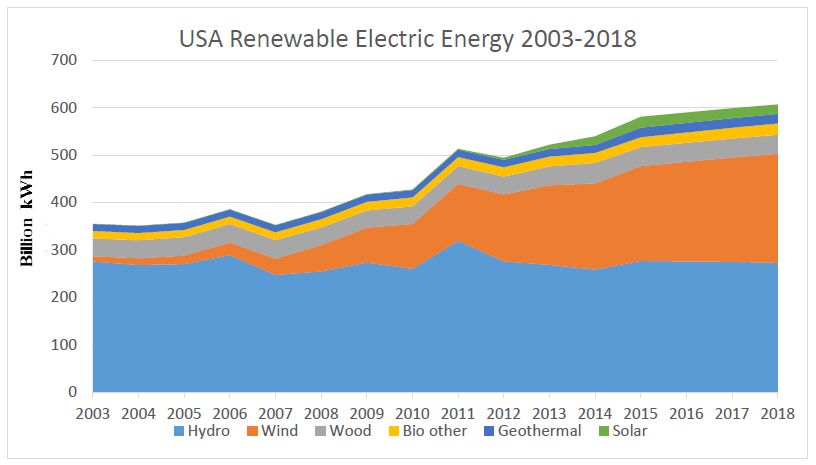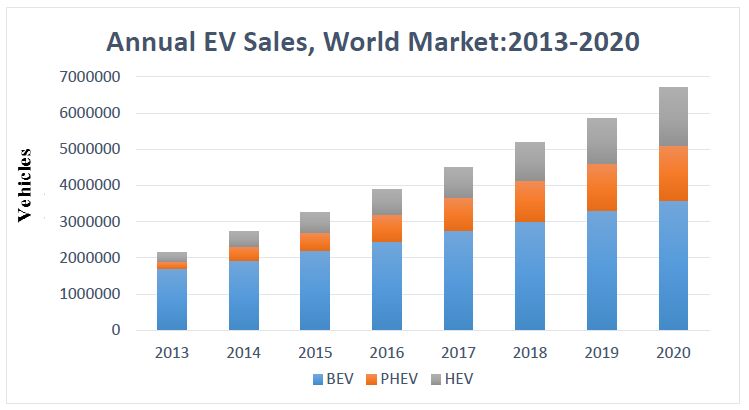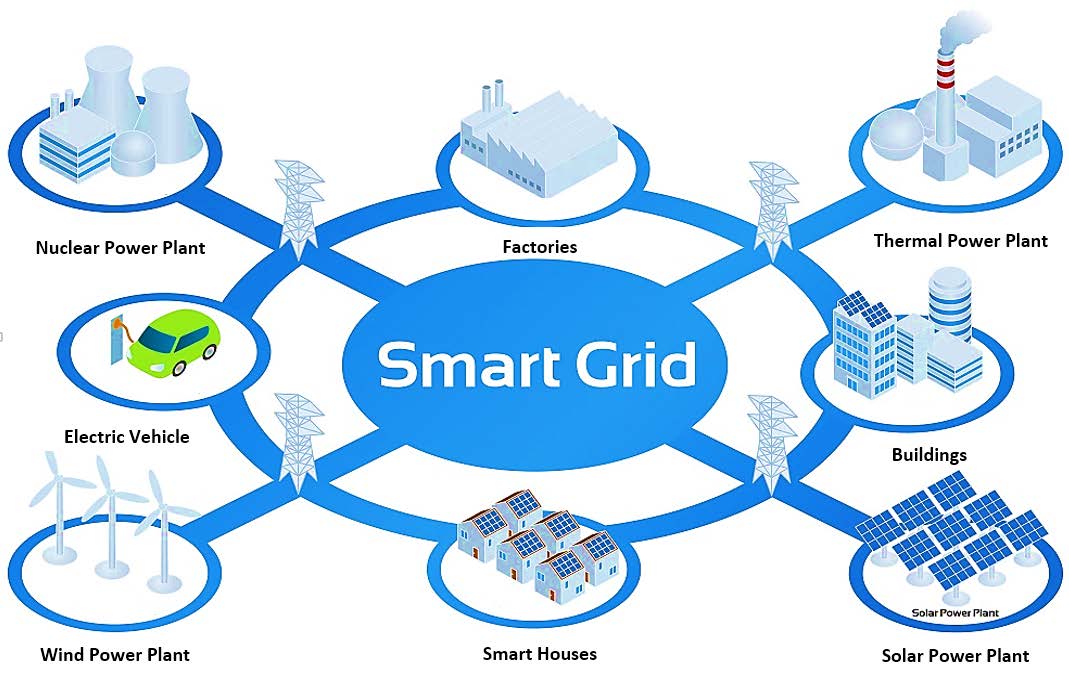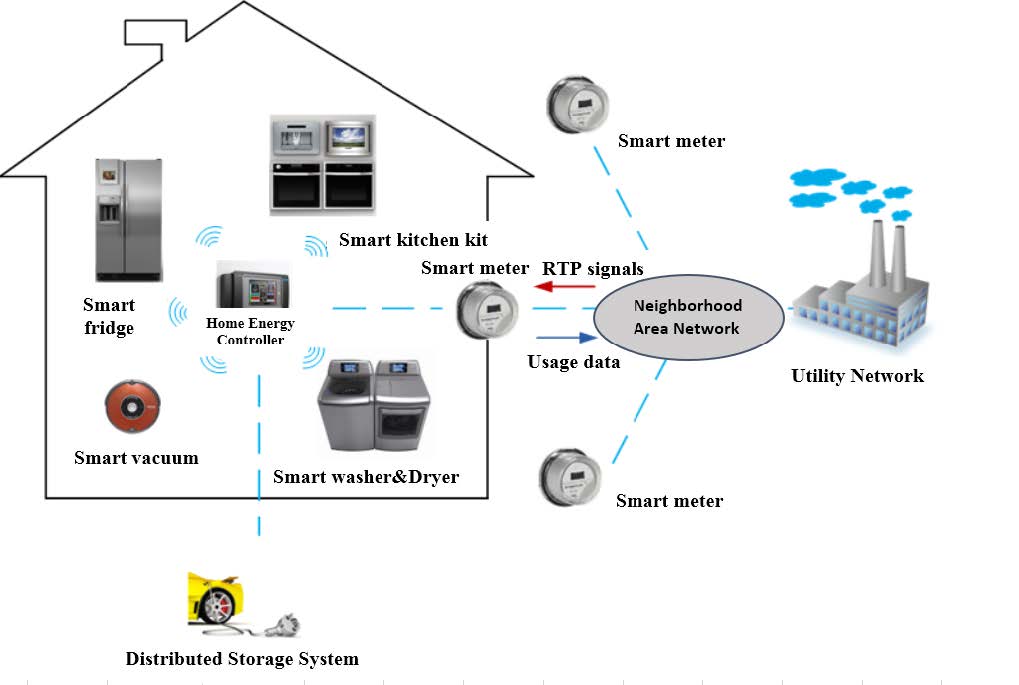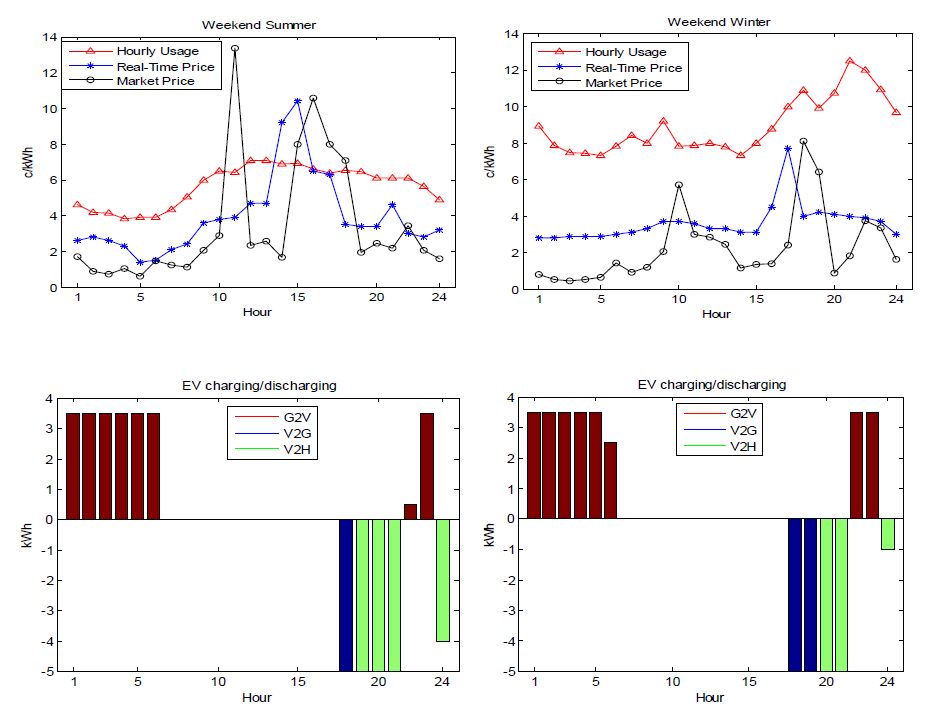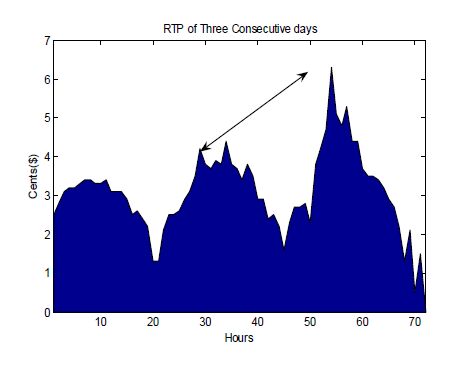1. Introduction
At the Paris climate conference (COP21) in December 2015, 195 countries adopted the first-ever universal, legally binding global climate deal. Governments agreed to a long-term goal of "holding the increase in the global average temperature to well below 2 °C above pre-industrial levels and to pursue efforts to limit the temperature increase to 1.5 °C above pre-industrial levels, recognizing that this would significantly reduce the risks and impacts of climate change". To attain this goal, Parties to the United Nations Framework Convention on Climate Change (UNFCC) committed "to achieve a balance between anthropogenic emissions by sources and removals by sinks of greenhouse gases in the second half of this century" [1].
Human activities have increased levels of carbon dioxide in the atmosphere from 280 parts per million before the industrial revolution to 400 ppm today. As a result, in 2015 meteorological stations around the world recorded a 1 °C rise in global temperatures above pre-industrial times. The Fifth Assessment Report (AR5) by the UN Intergovernmental Panel on Climate Change (IPCC) considered 116 scenarios consistent with a > 66% probability of limiting the increase in global average temperature to less than 2 °C relative to the pre-industrial era. From these 116 scenarios, 101 required negative emission technologies that result in the removal of greenhouse gases from the atmosphere (NETs) to be applied in the second half of the century [2].
Smith et al. [3] argues that the most cost-effective NET would be bio-energy with carbon capture and storage (BECCS). These solutions aim to remove diffuse CO2 from the air with plants, burn them, and then bury the carbon in concentrated form underground. Yet a major issue with BECCS is the availability of land and water. The study estimates that deploying BECCS at scale to stabilize the climate < 2 °C would require about 25 to 46% of total arable land and permanent crop areas. BECCS solutions raise the problem of trade-offs with food security [4,5], in the context of a fast-growing world population [6]. Article 2 of the Paris Agreement recognizes this risk and urges "increasing the ability to adapt to the adverse impacts of climate change and foster climate resilience and low greenhouse gas emissions development, in a manner that does not threaten food production". In line with Article 2 of the Paris Agreement [1], accelerating the adoption of climate-smart agriculture is critical to simultaneously enhance food security, promote economic growth, strengthen resilience to increased climate variability and minimize potential trade-offs with carbon management efforts such as BECCS.
A broad consensus exists among practitioners that building the climate-smart agricultural systems of tomorrow requires enabling farmers to deal with the farming constraints of today [7]. The most pervasive of these constraints is arguably the gender gap in access to land and productive resources—information, technology, labor, finance and markets. This gender gap is believed to translate into a significant productivity gap. A growing literature on the impact of the gender gap on agricultural productivity [8,9,10,11,12,13] estimates it to vary from 4 to 40% with the majority clustering around 20 to 30% [14]. The methodologies employed to assess the gender gap from a productivity perspective are still under dispute, especially when both men and women work crops or livestock [15,16], and authors warned against conceptualizing women as a homogenously vulnerable group in agriculture [17,18].
However, the literature strongly suggests that the gender gap in agriculture is material and diminishes substantially when women's access to productive assets is equal to men's [9]. In turn, this suggests that closing the gender gap in agriculture could achieve a "triple dividend" of gender equality, food security and climate management. Closing the gender gap should minimize potential trade-offs between food security and carbon management by increasing overall agricultural productivity, as well as leveraging women's agricultural knowledge and broader perception of food security [19]. Improving women farmers' access to productive resources could also enable them to meet the increased upfront capital, labour and information requirements of many climate-smart agriculture practices and adopt them at the same rate as men [18].
Despite this potential "triple dividend", most climate policies ignore the gender gap in agriculture [20]. Only 39% of the Intended Nationally Determined Contributions submitted by Parties to the UNFCCC as of 11/18/15 explicitly mention "gender" and/or "women" in the context of their national priorities and ambitions for reducing emissions [21]. This can be partly attributed to the fact that policy-makers, development practitioners and the private sector generally lack necessary information about the situation, role and contribution of women in agriculture and their rural environments in order to take decisions or measures to improve agricultural productivity and climate resilience in a gender-responsive manner. As highlighted by Doss [16], the assertion that closing the gender gap in access to productive assets leads to increased agricultural productivity depends upon a complex causal chain which does not in itself determine the agricultural interventions required to address the gap.
In response, this paper presents a three-step methodology to assist policy-makers in developing countries in disentangling opportunities and trade-offs associated with different portfolio of policies and interventions to close the gender gap for CSA: (i) develop a gender-neutral barrier and risk table for CSA investments; (ii) overlay a gender analysis onto this table; and (iii) map the full spectrum of gender-differentiated risks against potentially remedial public instruments.
Part Ⅰ introduces the root causes of the gender gap in agriculture. Part Ⅱ presents a gender-differentiated barrier and risk table for CSA investments and Part Ⅲ matches the identified gender-differentiated risks with possible policy solutions. This methodology is based on primary and secondary research. A review of the scientific and professional peer-reviewed literature was carried out to gather and synthetize existing research on the gender gap in agriculture and map investment risks and public policy instruments. The methodology is substantiated by empirical evidence collected through the formulation of three UN Women projects in Senegal, the Democratic Republic of Congo, and Malawi from September 2015 to June 2016.
2. The gender gap in the agricultural sector
Agriculture remains one of the most important areas of women's work globally with more than a third of employed women in the agricultural sector. Overall, in developing countries, women comprise 43% of the agricultural workforce, and play a critical role in supporting household and community food security, often in contexts of severe rural poverty and precarious livelihoods [9]. In sub-Saharan Africa, this proportion increases to 59% of employed women being in informal agricultural employment, mostly as small-scale farmers [22].
Yet women farmers have significantly less access to land, information, finance, agricultural inputs and higher added-value markets than men. This well-documented gender gap results from discriminatory laws, policies, and social and cultural norms. For example, a recent report on Women, Business and the Law [23] identifies 155 countries out of 173 that have at least one law impeding women's economic opportunities and 18 economies where husbands can prevent their wives from working.
Even the most well-intentioned public policies and programmes can inadvertently discriminate against women when gender-differentiated barriers are overlooked. Most agricultural policies and investments fail to consider differences in the resources available to men and women, their roles, labor burdens, and the constraints they face, and how these gender differences might be relevant to those proposed interventions [18,24,25,26,27]. It is often assumed that interventions to facilitate access to finance, technology or markets will have the same impacts on men and women; however, a growing body of evidence indicates that they regularly do not. This section presents the key gender gaps and structural barriers faced by women farmers.
Structural barriers to land tenure security constitute a first stumbling block for many women farmers [28]. An international comparison of agricultural census data by the Food and Agriculture Organization [9] shows that less than 20% of landholders worldwide are women. According to the OECD's Social Institutions and Gender Index [29], based on data for 161 countries, in only 37% of those countries do women and men have equal land rights to own, use and control land. In 4% of those countries, women explicitly have no legal right to own, use and control land, and in 59% of those countries customary, traditional and religious practices discriminate against women and undermine the full implementation of national legal codes.
Women's lack of land tenure security is historically related to inadequate or discriminatory legal and policy frameworks and social and cultural norms, such as male preference in inheritance, male privilege in marriage and so-called secondary land rights (meaning women farmers hold these rights through male family members). When the law guarantees women and men the same rights to own, use and control land, customary, traditional and religious practices often discriminate against women and undermine the full implementation of national legal codes. In sub-Saharan Africa, SIGI [29] data indicates that high to very high discrimination against women exists in practice in 29 of 43 countries. Women, especially widows, can also be the main victims of agricultural related property-grabbing including land, farm implements and inputs [11].
In addition, women farmers have little access to agricultural extension services. On average, women farmers benefit from only 5% of agricultural extension services today [9]. They are rarely among the large-scale commodity producers usually targeted by agricultural extension programs. The limited number of female extension workers may also constraint the system's ability to meet and respond to women farmers' needs in some socio-economic contexts [30]. For example, only 12% of agriculture extension agents were female in Ethiopia, a county where traditional customs prevent male extension agents from working with women farmers [31].
Furthermore, time constraints arising from the unequal sharing of the burden of unpaid domestic (for example, fetching water and fuelwood) and care work (for example, caring for children, the elderly or the sick) can severely restrict women farmers' capacity to access and act upon new information to improve their farming practices [24]. Around the world, women spend two to ten times more time on unpaid care work than men [32]. This is particularly pronounced in rural areas.
Women also face the risk of violence, which restricts their personal movement and occupational choices. This limited mobility affects their capacity to learn from neighboring villages experiencing similar agricultural challenges [18]. When risks of violence are such that women cannot leave their homes without safe male company, they impede access to most sources of information (agricultural extension meetings, training and skills development, etc.), other productive assets, financing or markets. When violence happens at home, women's paid work environments outside the home are affected as well, and include lost time at work and reduced attention and incentives for long-term investment [33].
Access to long-term affordable financing is another key barrier for women farmers, both in terms of their ability to invest in agricultural inputs and technologies to increase productivity and to participate in higher added-value chains and markets. Women farmers' access to financial services is constrained by a number of factors, including lack of land tenure security and lower financial literacy. Even when their land rights are secured and they have the financial literacy and agricultural information to develop a bankable project, women's plots tend to be insufficient in size and quality to qualify as collateral for a loan or credit. In addition, discriminatory legislation, social norms and lack of appropriate financial products might constrain their ability to access financing. Only 22% of women in low-income countries hold bank accounts in rural areas and commercial banks tend to work only with large farmers who are already well positioned in global value chains [34].
Women farmers' access to finance is also constrained by the fact that they are mostly unorganized. Participation in rural organizations such as peasants' associations, agricultural labour unions, cooperatives and project beneficiary committees reduce risks and transaction costs for funders [35]. It also increases rural men's and women's access to productive resources, information and training and may provide them with a way to sell their produce. Membership in these organizations also allows farmers to represent their interests to government authorities and policy makers, as policies reflect the interests of those who develop them [36,37].
However, rural women's membership in these organizations is often limited. In countries like India, Nepal, Bangladesh, Sri Lanka and Pakistan, women comprise just 7.5% of the total membership of agricultural cooperatives, as compared with 92.5% for men [38]. Similarly in Ethiopia, just 10 to 20% of cooperative members are women and only 3% of women hold leadership positions compared to 15% of men, and in Uganda only 5% of women hold leadership positions in their cooperatives [39]. While discrimination based in law may not prohibit women from becoming members or leaders, women are generally excluded because membership is based on land ownership and/or a head-of-household criterion [40].
Smallholder farmers usually earn incomes from a range of sources [41]. The structural barriers faced by women as farmers can also affect them as seasonal employees and small entrepreneurs and reduce their overall capacity to save and reinvest across their range of activities. Worldwide, women entrepreneurs have lower access to finance than male entrepreneurs [42]. Women-owned formal SMEs have 260 to 320$ billion in unmet financing needs worldwide. The IFC [43] found that women-owned businesses make up between 32 and 39% of micro and small enterprises, compared with 17 to 21% of medium-sized companies. They have also lower access to justice to seek recourse against discrimination, default or poor workmanship [44].
Climate change is expected to severely affect agricultural production and food security both globally and locally. Climate change will increase the frequency and impact of extreme hydro-meteorological events as well as weather variability, reduce the economic lifespan of infrastructure, compound existing conflicts over natural resources, worsen the vulnerability of ecosystems, and lead to the emergence of new global health challenges [2]. Climate change risks and challenges are projected to disproportionality affect women and children because of the pre-existing gender gap in land tenure, information, mobility, security, voice and agency, labour, financial and market access. It could also increase the likelihood of negative coping strategies and compound the present differential survival between the sexes in disasters, particularly where food shortage is involved [45,46].
Small farmers can adapt to climate change by adjusting existing farming practices, such as changing varieties, tillage techniques and planting schedules; investing in new production infrastructure, such as irrigation powered by renewable energy technologies; or diversifying economic activities, including greater focus on higher-value agricultural processing and partially or fully moving out of agriculture into other, less vulnerable sectors. The scope for adjustment of existing farming practices is lower in the tropics, where planting schedules are typically dictated by rainfall and crops are already grown at their optimal temperature range [47]. Thus the adaption of smallholder farming in developing countries to climate change will depend in large part upon access to new markets, new farming inputs and new knowledge.
However, a wide spectrum of barriers hinder this critical transformation of smallholder farming in developing countries. Given the pre-existing gender gap in agriculture, these market transformation barriers are likely to be more severe for women farmers. Notably, empirical evidence suggests that women are constrained in their capacity to adapt to climate change by the very same gender gap in agriculture that increases their vulnerability to it [18,20,48,49,50]. Thus, this paper hypothesizes that market transformation efforts intended to accelerate the adoption of climate-smart agriculture are unlikely to benefit men and women farmers equally if they do not address both generic and gender-differentiated barriers and risks. To further explore how existing structural barriers affect women farmers' investment incentives, the next section proposes a model to identify gender-differentiated risks in climate smart agriculture.
3. Gender differentiated investment risks in climate-smart agriculture
Numerous beneficial CSA solutions exist, ranging from improved land and water management to innovative post-harvest practices [26,51,52,53,54,55,56,57,58,59,60]. The presence of commercially attractive solutions should theoretically facilitate the development and scaling up of public and private investment for climate smart agriculture. However, investment in seemingly commercially viable climate-smart opportunities faces a range of informational, technical, institutional and financial barriers [61,62,63,64,65]. These barriers translate into significant investment risks.
Smallholder farmers are entrepreneurs with a high discount rate. They operate in a high-risk environment with small margins, and seek to be profitable in the very near-term. Farmers are unlikely to invest or borrow at scale for CSA initiatives without a deliberate effort to reduce these barriers. Similarly, financiers are unlikely to lend for capital-intensive investments with uncertain pay-offs. When it is available, finance will come with short tenors and high interest rates, affecting the commercial attractiveness of all but the most profitable CSA investments.
Thus it is necessary to establish a policy environment that reduces CSA investment risks. Accurately assessing the investment barriers and risks in agriculture requires a clear conceptual understanding of their interrelationships. Barrier and risk analyses are increasingly used to identify public instruments that can catalyze climate smart investments [64,65,66]. Barriers can be understood as the drivers, or the root causes, of risks. Barriers translate into risks that deter investment. Once identified, investment risks can be mapped against a set of possible public instruments and incorporated into market transformation efforts to improve the risk-reward profile of a given set of investments.
Building on this market transformation methodology and drawing on primary and secondary research, Table 1 clusters generic barriers to CSA into nine independent risk categories. To assess whether the gender gap translates into gender-differentiated risks which deter investment in CSA—and would thus explain the perceived slower adoption rate of CSA by women farmers in the literature—we then overlay a gender analysis onto this gender-neutral investment barrier and risk analysis. For each gender-neutral risk listed in Table 1, we assess its gender-differentiated probability of occurrence and potential severity. We also list additional gender-specific barriers. The full gender-differentiated risk analysis is given in Supplementary Annex 1.
Table 1. A gender differentiated barrier and risk analysis for climate smart agriculture.
| Risk category |
Description |
Underlying barriers |
Increased probability of occurrence and severity of impact of risks for women |
Additional gender-specific barriers
|
| 1. Production risk |
Risks associated with adoption of new farming practices in a changing socio-economic and physical environment |
-Limited awareness of the impact of climate change and knowledge of CSA practices
-Limited access to climate-resilient farm inputs and new and/or improved technologies such as solar-powered irrigation pumps
-Limited agricultural extension services
-Limited capacity to interpret and apply climate and weather information to adjust farming practices
-Limited saving rates and safety net to experiment with non-traditional agricultural practices and meet higher upfront costs of climate smart inputs and technologies
-Uncertainty on market demand or/and lack of access to markets for new farming products
-Land regime uncertainties discourage long-term investment |
-Lower access to climate and weather information
-Lower membership in farmer associations to access inputs
-Lower access to agricultural extension services
-Gender gap in access to finance
-Gender gap in access to land
-Limited access to labour and tools that are usually part of men's domain
-Gender segregated labour and tools
-Lower participation in market institutions |
|
| 2. Technology, input and farming practice risk |
Risk arising from limitations in the quality and availability of climate smart farm inputs and technologies, as well as its treatment by customs |
-Lack of technical standards and quality assurance mechanisms for new CSA technologies
-Poor quality and availability of farm inputs (climate resilient seeds, fertilizers, etc.) and technology
-Limited capacity to provide after-sale services to farmers |
-Gender gap in access to technical information and skills
-Lower access to recourse against poor quality
-Social norms can limit women access to technology providers |
|
| 3. Labour inputs risk |
Risks arising from the lack of skilled and qualified potential employees to develop and promote climate smart inputs, technologies and practices |
-High illiteracy rates in rural areas
-Lack of a competitive labour market
-Labour shortage during key agricultural period (soil preparation, etc.)
-Limited capacity to prepare bankable project proposals |
-Higher female illiteracy rate in rural areas
-Gender disaggregated occupation limiting women choices due to discriminatory social norms and stereotypes.
-Increase workload because of gender differentiated tasks (weeding, biomass collection, etc.)
-Negative impact on women health through exposure to chemicals, physically stressing gender differentiated tasks and heavier equipment. |
-Women's disproportionate responsibility for domestic work and unpaid care limit their capacity to acquire and apply new skills required for climate smart agriculture and agri-business
-Risk of harassment and violence limit women's mobility and access to information
|
| 4. Financing risk |
Risks arising from scarcity of domestic investor capital (debt and equity) for climate-smart agriculture, and domestic investors' lack of familiarity with climate-smart agriculture and appropriate financing structures |
-Capital scarcity—liquidity constraints in domestic banking
-Capital scarcity—underdeveloped domestic financial sector
-Capital scarcity—competing incentives
-Lack of track record and poor risk assessment capacity for climate resilient technologies and practices
-Lack of appropriate collateral of farmers for a bank loans and difficulty in assessing farmers' creditworthiness due to their lack of credit histories
-Lack of tailored financial products and limited in-house expertise in climate-resilient farming
High transaction costs to provide small loans to remote farmers
-Lack of risk management services. |
-Lack of rural banks more likely to affect women farmers due to lack of mobility
-Lower level of collateral and uncertain property rights reduce the credit worthiness of women farmers |
-Harmful social norms on women access to finance and aptitude as investors
|
| 5. Regulatory risk |
Risks arising from lack of or counterproductive regulatory and public policies to support CSA |
-Lack or inadequate climate change strategies and policies
-Limited understanding of the role and importance of public policies to support CSA
-Limited capacity to identify barriers to CSA and implement policies to remove them
-Budget constrains to design and implement policies to catalyze CSA investment
-Lack of cross-sectoral and inter-departmental coordination to promote integrated policies
-Complex, inconsistent or opaque licensing processes for new CSA technologies
-Lack of long-term macro-economic signals affect CSA markets
-Negative distortions that reduce incentives to investment in climate-resilient infrastructure and practices (agricultural and fossil fuels subsidies, etc.)
-Undervalued natural capital: Life support services provided by not accounted by public and private sectors, leading to unsustainable natural resource uses and underinvestment in ecosystem services conservation.
-Uncertainty or impediments due to government policy or political instability.
-Lack of trust among economic actors, which hinders the effectiveness of public-private partnerships (Brickell and Elias, 2013) |
-Limited capacity to identify gender specific barriers and risks to CSA and implement policies to remove them
-Lesser voice and agency of women farmers to influence economic policies
-Lack of cross-sectoral coordination affects the capacity to link CSA policies with other sectoral policies (education, health, etc.) critical to address structural gender barriers
-Women are softer targets for corruption
|
-Gender differentiated risks not taken into consideration in -CSA strategies and policies, which unintentionally result in discriminatory practices
|
| 6. Market risk |
Risks arising from limitations and uncertainty in the agricultural market regarding market outlook, access, price and competition for climate smart farm products, technologies and practices |
-Limited awareness of opportunities and risk associated with climate change, compounded by lack of data and technical skills
-Lack of market governance institutions to break smallholder isolation and generate economies of scale (farmer associations, intermediary institutions, commodity exchanges, investment promotion agencies, etc.)
-Lack of logistical infrastructure to limit post-harvest losses and secure market for CSA products
-High transaction costs for small-scale opportunities in remote areas
-Difficulty in converting social benefits into private profits
-Limited access to affordable, long-term finance to meet higher upfront costs of climate-resilient product development and marketing
-Reluctance of private sector to participate in programmes requiring various degrees of government support due to fear of policy reversal
-Lack of proven technologies and practices to address specific adaptation challenges; uncertainty on future pay-off in the absence of proven business models
-Subsidies and practices that encourage inefficient uses of natural resources |
-Lower membership in market governance institutions
-Lesser voice to influence infrastructure investment |
-Limited mobility because of risks of violence impedes access to markets
|
| 7. Social acceptance risk |
Risks arising from lack of awareness and resistance to climate smart inputs, technologies, practices and farm products in communities |
-Resistance by consumers to new farm products
-Lack of public support for phase out of Subsidies and practices that discourage CSA. |
-Changes in control over resources (ex: crops traditionally controlled by women shift to men as a result of inter-cropping) |
|
| 8. Currency risk |
Risks arising from currency mismatch between hard currency debt/equity and domestic currency revenues. |
-Uncertainty due to volatile local currency |
|
|
| 9. Sovereign risk |
Risk arising from a mix of cross-cutting political, economic, institutional and social characteristics in the particular country which are not specific to CSA |
-Conflict, political instability, economic performance, weather events/natural disaster, legal governance, ease of doing business, crime and law enforcement, land tenure and infrastructure |
|
|
The gender-differentiated barrier and risk analysis suggests that about half of the CSA investment risks have a higher probability of occurrence and/or severity for women farmers than for men farmers. Furthermore, women farmers might face additional gender-specific barriers, mostly linked to their disproportionate responsibility for unpaid domestic and care work, the risk of violence and unequal power relations with men.
For example, the lack of land tenure security increases the risk for women farmers to invest in long-term sustainable land management practices—even fairly straightforward CSA practices, such as agroforestry or planting native tree species mean a 5-7 yearsinvestment. In addition, climate-smart agricultural approaches tend to require greater upfront capital for investments in climate resilient infrastructure, such as irrigation systems. Lack of land tenure security also reduces women farmers' capacity to leverage land as collateral to access long-term affordable finance. Women farmers already without access to short-term finance to purchase fertilizers and other agricultural inputs, due to the absence of collateral and prevailing discriminatory social norms, will be even harder pressed to obtain the long-term affordable finance required for climate resilient agriculture.
Similarly, climate-smart agriculture is increasingly knowledge-based. As discussed in section I, women often have less access to agricultural information and extension services. As such, women farmers are likely to have the least access to additional climate and weather information that could help them anticipate variations in temperature and rainfalls, choose appropriate seeds, and make informed decisions about when and what to plant in a changing climate. They will have also the least access to extension services to enable them to adopt new farming practices and seize new market opportunities.
Climate change could also exacerbate the time poverty and unpaid domestic and care work burdens of women farmers in numerous locations as they need to walk longer distances to fetch water and fuel, and to dedicate more time to care for the sick and the vulnerable [67]. Several studies [24,27,68] have shown that women's labour burden can increase with new technologies and practices, for instance more weeding as a result of non-tillage, and limit the capacity of women to adopt climate-smart practices.
Furthermore, they may face increased labour shortages during the growing cycle as a result of changes in weather patterns. For example, ploughing is often considered a male occupation. Climate change may reduce the optimal window for soil preparation, forcing women to wait for men farmers to complete the preparation of their own plots before they can turn their attention to women's plots.
In addition, climate could disproportionally affect the heath of women through the growing risk of gender-based violence under stress conditions, lower physical resistance levels under food and water scarcity (e.g. eating less and last because of harmful social norms), greater exposure to toxic chemicals, use of heavier equipment, and longer distances to fetch and carry fuel and water.
4. Mapping CSA risks against remedial public instruments
The urgency of climate change means that it is vital to accelerate the adoption of climate-smart agriculture while preventing trade-offs between food security and climate action. However, the gender differentiated barrier-risk analysis suggests that climate change is likely to exacerbate the existing structural barriers and risks faced by women farmers, while at the same time creating new ones. This is likely to slow down their adoption of CSA practices, potentially generating a downward spiral.
Whether these gender-differentiated investment barriers and risks to CSA are present will be highly context-specific. Women, and no less women farmers, are not a homogenously vulnerable group [18]. Women in rural areas vary widely by location, age, ethnicity, culture and social class, health, religion, work status as do their agricultural contexts in a rapidly changing climate [18,24,26,29]. For example, major progress has been made in terms of gender parity in primary and secondary education [69].
Despite overall positive trends, considerable variation exists across countries and socio-economic segments in terms of gender parity in primary education access, which is key for the adoption of CSA practices. Notably, conflict-affected areas are sites of extreme disadvantage in education. In Afghanistan, 70 girls per 100 boys are in school, while in neighboring India, nearly 90 boys for 100 girls are enrolled [69]. Similarly, the poorest girls remain the most likely to never set foot in a classroom. In sub-Saharan Africa, gender parity in completion of primary education exists among the richest 20% but among the poorest 20%, 83 females completed primary education for 100 boys [69].
Yet, the large number of possible additional or more severe barriers increases the likelihood that some gender-differentiated risks will be present in most locations and communities. This will translate into higher investment, transaction and opportunity costs. When available, finance is likely to come at a premium to compensate investors for perceived or actual technical, market, regulatory, institutional and political risks, adversely affecting the commercial viability of CSA investments by women farmers.
Targeted interventions will be required to address gender differentiated risks that will hamper the adoption of CSA by women farmers. Similarly to the identification of risks and underlying barriers, the selection of an optimal portfolio of public policy instruments will depend on the specific challenges and opportunities present in each location. A practice that is climate smart in one location might be inappropriate in another [68,70].
Furthermore, barriers and risks need to be assessed for each group of stakeholders involved in the CSA supply chain to women farmers. CSA investment will typically involve five common stakeholder groups: producers, end-consumers, policymakers, financiers and the supply chain firms. Each stakeholder will have different incentives, which are also gendered. Most of the barriers affecting women farmers as producers discussed in Part I can also touch women in other stakeholder groups (i.e., discriminatory social norms/stereotypes, inheritance and marriage laws, threat of violence, etc.).
Understanding the incentives and roles of the different stakeholders across geographies is critical to assess the viability of, and catalyze investment in, climate-smart agriculture. Several barriers can combine to prevent a given stakeholder group from using or investing in a climate-smart technology or management practice. For example, an agribusiness considering a crop diversification investment may face barriers such as market distortions from agricultural subsidies, limited local supply of skills, import/export barriers, limited access to credit, poor logistical infrastructure or domestic political instability, among others. Similarly, a given barrier can affect several stakeholder groups. As an illustration, lack of access to long-term affordable finance to meet the higher upfront costs of CSA technologies and the lack of risk management instruments will simultaneously affect farmers, investors and supply chain firms.
This means that addressing the barriers related to one stakeholder group in isolation cannot transform a market. Likewise, removing only some of the barriers affecting a given group of stakeholders will not be enough to enable them to fully adopt CSA technologies and practices. An analytical framework is required to support the systemic identification, discussion and prioritization of targeted interventions to remove generic and gendered risks and barriers. The gender-informed investment barrier and risk analysis can be broadened to provide such a framework.
Public policy instruments can transform markets and catalyze investment to accelerate the adoption of beneficial technologies and practices through reducing, transferring and/or compensating for risks. They can broadly be divided into three groups [66]:
· Policy de-risking instruments: These seek to remove the underlying barriers that are the root causes of risks. As the name implies, these instruments utilize policy interventions to mitigate risk and include, for instance, local skills development; regulatory and legal development; strengthened market governance institutions; and long-term, stable, coherent and transparent national policies. These instruments provide a foundation for investment.
· Risk transfer instruments: Some investment risks such as small market size, limited infrastructure or political instability can only be partially addressed through policy measures. Risk sharing instruments do not seek to directly address the underlying barriers, but instead transfer some of the risks that private investors face to public actors. These instruments can include, for example, loan guarantees, political risk insurance and public co-investments.
· Financial compensation instruments: Recognizing that all risks cannot be eliminated through policy de-risking or risk transfer instruments, efforts to reduce risks can be complemented by additional financial incentives to compensate for any residual above-average risks and costs.
The last step of the proposed methodology to address gender-differentiated CSA investment risks is to match each generic and gendered investment barrier and risk identified in Table 1 against a possible portfolio of remedial policy de-risking, risk transfer or compensation instruments. For example, Table 1 identifies "limited awareness of the impact of climate change and knowledge of CSA practices" as a key production barrier. Small and poor farmers are the key affected stakeholder group. The probability of occurrence and severity of this risk will be higher for women smallholders given the gender gap in access to information. In addition to generic awareness-raising campaigns about climate-induced risks (policy de-risking instrument), gender differentiated preferences in accessing climate information should be identified and the media mix configured to optimally reach out to both women and men farmers (gender differentiated policy de-risking instrument). Complementary gendered solutions such as a challenge grant for climate and weather information providers to develop appropriate information services for women farmers (financial compensation instrument) could be considered.
A key benefit of adopting the barrier-risk-instrument model as the conceptual framework to identify public policy responses is that it involves a transparent, structured process whereby assumptions are made explicit, and can be checked, debated and enriched to strengthen the design of CSA market transformation initiatives. A further benefit is to enable an analysis of potential synergies, overlaps and trade-offs across public policy instruments. For example, efforts to raise awareness and increase access to applied climate information should be designed so that they build on and/or complement interventions to engender extension services to reduce other gendered production risks. Increase awareness of the impact of climate change should also facilitate the adoption of risk transfer instruments such as weather-indexes.
Based on the literature review [26,53,54,55,56,57,58,59,60,71,72,73] and empirical evidence derived from the formulation of three UN Women CSA projects in sub-Saharan Africa, we have identified a number of possible public instruments to address each of the generic and gender-specific risks and barriers analyzed in Table 1. In the selection of the instruments, a strong attention is paid to information and communication technologies as well as innovative financing instruments to break the isolation of women farmers, create economies of scale and bring them into local, national and global supply value chains [74,75,76,77,78,79,80,81]. The full mapping of possible public policy instruments is presented in Annex I. This list of instruments is indicative and, as such, subjective. For example, some stakeholders might choose to place a lower or stronger premium on innovative financing instruments. Furthermore, it will need to be localized and further expanded to meet the unique barriers and requirements of each geography. A number of tools for data collection and analysis exist to conduct such a localization exercise [72,82,83].
Public policy instruments to catalyze investments come at a cost. Irrespective of the instrument portfolio that is selected, there will be a cost to the supply chain, consumers and/or taxpayers. Numerical methodologies have been developed to assess the cost-effectiveness of different mixes of public instruments to transform renewable energy markets [65]. These methodologies rely on the professional judgment of industry analysts, entrepreneurs and investors. For smallholder CSA, it will also be critical to rely on the best judgment of concerned entrepreneurs and investors—women farmers and other supply chain stakeholders—and invite them to localize and apply these analytical tools.
The differential in financial literacy does not lessen the need to engage stakeholders to determine how to best address their unique requirements, and include their voices and decisions in the design of solutions. Participatory approaches for CSA can substitute to numerical models developed for renewable energy. As for any market transformation effort, a robust monitoring and evaluation framework should be established to lay the foundation for a mutual learning system as well as the quantification of the impact of different portfolio of policy instruments.
The barrier-risk-instrument table provides a breadth of information. Such a systemic analysis is critical to ensure that all local barriers and resulting risks are discussed and removed in a cost-effective manner. However, its breath of information can prove overwhelming and reduce its usefulness for agricultural and climate policy makers and practitioners. To facilitate the application and localization of the proposed methodology, Annex Ⅱ embeds possible interventions identified in the generic barrier-risk-instrument table into an overall theory of change. Specifically, the theory of change clusters interventions to address key gender gaps in: (i) CSA policies; (ii) access to finance and technologies; (iii) access to information; and (iv) access to markets. It also provides a visual representation of the derived logical framework.
The localization of the illustrative theory of change can serve as a starting point for a policy dialogue on gender differentiated investment risks to CSA. Then, it can lay the foundation for the development of a full barrier-risk-instrument table to integrate gender into overall CSA market transformation efforts. The UN Women project documents in Malawi, Senegal and DRC illustrate how this illustrative theory of change and logical framework can be localized to meet the unique requirement of each geography and concerned communities in a gender-responsive manner [48,49,50].
5. Conclusion
This paper argues that addressing gender-differentiated investment risks for climate-smart agriculture offers a potential, but currently unrealized, triple dividend. It can simultaneously advance gender equality, food security and cost-effective climate management, all of which lie at the heart of the new Sustainable Development Goals. It should be, therefore, an investment priority for policy makers.
However, the gender differentiated barrier and risk model developed in this paper suggests that for women farmers, existing structural barriers to gender equality—notably in access to land, productive assets and markets—are likely to translate into additional risks for investment in climate smart agriculture, greater likelihood that risks will translate into negative impacts, and greater severity of these impacts. This will limit the capacity of women farmers, who account for the majority of farmers in some locations, to invest in CSA and act as change agents to address climate change at scale. Ultimately, it could compound the gender gap and increase the vulnerability of communities and societies to climate change and significantly affect their food security.
Accordingly, on-going efforts to promote climate-smart agriculture must be engendered to benefit equally women and men farmers and entrepreneurs, and to increase the efficiency of climate change action. However, there is limited guidance and information on the type of public interventions needed to reduce CSA risks for both men and women, the ways to best combine and sequence them, and the respective cost-effectiveness of different potential portfolios of such measures.
The proposed methodology can facilitate efforts to design and implement gender-responsive CSA policies in a transparent and systemic manner. The adoption of such an analytical framework can also facilitate the feedback loop needed to refine the proposed approach based on emerging findings from its application. Such feedback is critical to assess the cost effectiveness of agricultural interventions targeting the gender gap and to build the evidence-based required to catalyze public and private climate action at scale
Conflict of Interest
I confirm that I do not have any conflict of interest in connection to the paper.









 DownLoad:
DownLoad: 

